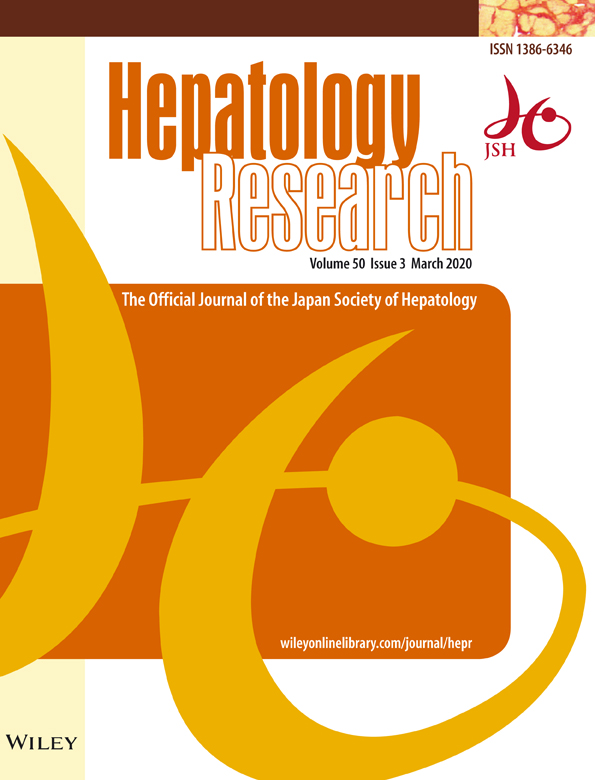Clinical utility of the Liver Frailty Index for predicting muscle atrophy in chronic liver disease patients with hepatocellular carcinoma
Abstract
Aim
Muscle atrophy is a prognostic factor for patients with chronic liver disease (CLD) and hepatocellular carcinoma (HCC). The Liver Frailty Index (LFI) is a simple physical function test; however, an association between LFI and muscle mass remains unclear. We aimed to investigate the utility of LFI for predicting muscle atrophy in CLD patients with HCC.
Methods
We enrolled 138 CLD patients with HCC (aged 77 years, female/male 34.8%/65.2%). Muscle mass was assessed by skeletal muscle index, and patients were classified into the muscle atrophy group (n = 109) or the non-muscle atrophy group (n = 29). Physical frailty was assessed by LFI. The optimal cut-off value of LFI for predicting muscle atrophy was identified by receiver operating characteristic analysis.
Results
In the muscle atrophy group, the prevalence of pre-frail/frail was significantly higher than the non-muscle atrophy group (87.2% vs. 58.6%, P = 0.0005). In the logistic regression analysis, being female and pre-frail/frail were identified as independent factors associated with muscle atrophy (pre-frail/frail; OR 3.601, 95% CI 1.381–9.400, P = 0.0088). In patients with normal grip strength, 71.1% of patients were pre-frail/frail, in which 82.8% of patients showed muscle atrophy. Receiver operating characteristic statistics provided an area under the curve of 0.74, and an LFI cut-off value of 2.94 for predicting muscle atrophy (sensitivity 88.06%, specificity 52.17%, accuracy 77.91%).
Conclusions
We showed that pre-frail/frail was an independent factor for muscle atrophy in CLD patients with HCC. Furthermore, LFI predicted muscle atrophy with high sensitivity, even in patients with normal grip strength. Thus, LFI might be a useful screening tool for muscle atrophy in CLD patients with HCC.




